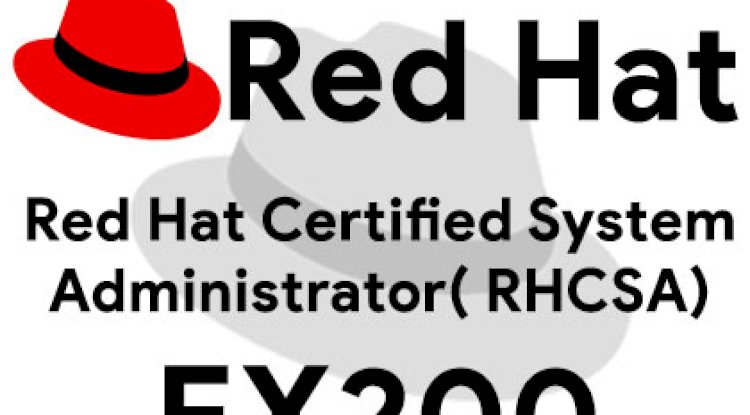Understanding the Wayback Machine | A Cybersecurity Tool for Digital Time Travel, OSINT, and Data Recovery
The Wayback Machine is a powerful tool by Internet Archive that captures and stores versions of websites over time, making it a key resource in the field of cybersecurity. It allows users to track website changes, access deleted content, and uncover hidden or previously exposed data — all of which are valuable in ethical hacking, penetration testing, and OSINT (Open Source Intelligence) research. Cybersecurity experts use the Wayback Machine to detect vulnerabilities, analyze legacy systems, and support digital forensics, while attackers may exploit it to retrieve sensitive credentials, discover outdated software, or map the structure of an organization’s digital presence. While the Wayback Machine helps protect and recover data, it can also be misused, making it essential for organizations to monitor their archived content, restrict indexing of sensitive directories, and implement security best practices.

Introduction
The internet is constantly changing — websites get updated, content gets removed, and sometimes entire domains disappear. But what if you wanted to look at how a website looked 5 or 10 years ago? That’s where the Wayback Machine comes in.
The Wayback Machine is a service offered by the Internet Archive (archive.org). It allows users to view archived versions of websites across time. This tool is a goldmine not just for digital historians or curious users, but also for cybersecurity professionals and unfortunately, even malicious hackers.
In this blog, we’ll break down what the Wayback Machine is, how it’s used in cybersecurity and ethical hacking, how it can be misused, and how to use it effectively. We’ll also explore real-life examples and scenarios where the Wayback Machine played a key role.
What Is the Wayback Machine?
The Wayback Machine is a digital archive of the World Wide Web, created by the Internet Archive, a nonprofit organization. It has been storing snapshots of websites since 1996, capturing and saving pages at various intervals over time.
You can visit it at: https://web.archive.org
Key Features:
-
Search by URL: You enter a website address and view its past versions.
-
Calendar view: Shows which dates the site was archived.
-
View deleted content: Sometimes you can access content that has been removed or hidden.
-
Download files: Some archived files (images, documents) can be accessed or downloaded.
How the Wayback Machine Is Used in Cybersecurity
1. OSINT (Open Source Intelligence)
In cybersecurity, OSINT is about gathering publicly available information about a target. The Wayback Machine helps analysts:
-
See older versions of websites
-
Identify previously exposed files or directories
-
Track changes in website structure and content
-
Collect email addresses, usernames, and internal URLs
Example: A cybersecurity analyst wants to audit a company's website for information leakage. Using the Wayback Machine, they discover an older version of the site with a page listing employees and their emails — which no longer exists on the current site.
2. Discovering Removed or Hidden Data
Companies often remove sensitive pages after realizing they exposed too much data. But if the Wayback Machine archived the page, that data might still be visible.
Example: A login page with a test admin panel was deleted from a site. A hacker checks archive.org and finds it saved, giving them clues about the site's backend.
3. Investigating Breaches and Digital Forensics
During an investigation, knowing how a website looked before or during a breach can provide critical clues:
-
Was a vulnerable plugin installed?
-
Was a script exposed?
-
Were any warning signs ignored?
4. Historical Vulnerability Research
Sometimes, older versions of websites or applications used outdated technologies. Looking at the historical setup can help in:
-
Identifying outdated software versions
-
Tracing the source of vulnerabilities
-
Checking previous configurations of servers or databases
How Cybercriminals Misuse the Wayback Machine
While cybersecurity professionals use the Wayback Machine for protection, attackers can misuse it in several ways:
1. Finding Exposed Credentials
Developers sometimes accidentally publish .env files, config files, or database dumps. Even if they delete them later, the Wayback Machine may have archived it.
2. Learning the Structure of a Website
Attackers can study the sitemap and directory layout to plan targeted attacks, especially if internal folders were exposed in older versions.
3. Targeting Forgotten or Legacy Systems
Old URLs may point to outdated systems, forgotten subdomains, or APIs that are still online and vulnerable.
Example: A company changes its API from api.oldsite.com to api.newsite.com, but leaves the old one online. An attacker finds the old link via Wayback Machine and discovers it's not patched.
How to Use the Wayback Machine Step-by-Step
Step 1: Go to archive.org
-
Visit https://web.archive.org
Step 2: Enter a URL
-
Type the address of the website you want to check.
-
Example:
example.com
Step 3: Explore the Timeline
-
A calendar appears showing all the dates the site was saved.
-
Click on any year, then pick a specific day.
Step 4: Browse Older Versions
-
View and click around the archived page like a normal site.
-
Look for folders, file names, or email IDs.
Step 5: Analyze and Compare
-
Compare changes between different years.
-
Look for hidden directories, exposed data, or structure changes.
Real-Life Examples
1. SolarWinds Attack
Researchers used the Wayback Machine to review SolarWinds’ website before the breach was public. They found outdated code references and exposed file paths that helped understand how attackers may have infiltrated the system.
2. Archived .git Folders
A penetration tester found an exposed .git/ folder in a past snapshot. Downloading it allowed them to reconstruct the source code and find a vulnerability.
3. Credentials in Backup Files
A developer uploaded a file backup_2019.zip with sensitive config files. It was later removed, but not before being archived. Hackers accessed it and found hardcoded credentials.
Best Practices to Avoid Being Exposed in the Wayback Machine
-
Use robots.txt: Block archive.org bots if needed using:
User-agent: ia_archiver Disallow: / -
Remove sensitive files from root directories
-
Avoid uploading test or debug files online
-
Regularly audit your website’s public footprint
-
Ask archive.org to remove specific pages if they contain sensitive data (you can request removal)
Should You Use the Wayback Machine for Security Testing?
Yes, but ethically and legally. If you’re an ethical hacker, penetration tester, or security researcher:
-
Always get permission before testing others’ websites
-
Only use it for OSINT or documentation
-
Don’t misuse exposed data for unauthorized access
Conclusion
The Wayback Machine is a powerful tool that serves historians, developers, and cybersecurity experts alike. It preserves the past, but sometimes, that past can come back to haunt you — especially if it contains sensitive data. While ethical hackers and security researchers can use it to prevent cyber threats, attackers can use it to plan sophisticated attacks using previously exposed data.
If you’re managing a website or digital assets, always be aware that what goes on the internet may never truly disappear. Use the Wayback Machine wisely — whether to protect, investigate, or learn.
Frequently Asked Questions (FAQs)
What is the Wayback Machine?
The Wayback Machine is an internet archiving tool that saves snapshots of websites across time, allowing users to view how websites looked in the past.
How does the Wayback Machine relate to cybersecurity?
Cybersecurity professionals use it to perform OSINT, recover deleted pages, and detect previously exposed sensitive information.
Can hackers use the Wayback Machine?
Yes, attackers can misuse it to find exposed credentials, old login portals, or outdated systems that may still be vulnerable.
Is the Wayback Machine legal to use?
Yes, it's a publicly available tool, but using information from it for malicious intent is illegal.
How can I access the Wayback Machine?
Visit https://web.archive.org and enter the website URL you want to view.
Can I recover deleted content from a website using it?
Yes, if a page was archived before deletion, it can often be retrieved through the Wayback Machine.
Can websites stop the Wayback Machine from archiving them?
Yes, websites can block it using a robots.txt file that disallows the ia_archiver user agent.
What is OSINT and how does the Wayback Machine help with it?
OSINT (Open Source Intelligence) involves gathering publicly available information, and the Wayback Machine helps by showing historical site data.
What kind of sensitive data can be exposed?
Archived pages may contain emails, usernames, configuration files, backup folders, or even passwords.
How often does the Wayback Machine archive websites?
It varies; high-traffic sites are archived more frequently, while others might be captured only occasionally.
Can I request to remove a page from the Wayback Machine?
Yes, you can submit a request to Internet Archive for removal of sensitive or copyrighted content.
What types of files are archived?
Primarily HTML, images, documents, and in some cases PDFs or ZIPs if linked publicly.
Can I use it for forensic investigation?
Yes, investigators use it to analyze digital trails, breached pages, or pre-attack site configurations.
Are login pages visible in archived versions?
Yes, old login portals can be found if they were public and archived.
Can I see how a website looked 10 years ago?
If it was online and archived, yes — some sites have snapshots dating back to the late 1990s.
Can it show how a website changed over time?
Yes, you can view and compare multiple snapshots to track updates, additions, or removals.
What are real-life uses of the Wayback Machine in security?
It has helped analyze breaches, retrieve source code from .git folders, and identify data leaks.
Does it archive password-protected pages?
No, it cannot access password-protected or private content unless those pages were accidentally made public.
Is everything on the internet archived?
No, only public pages that are crawled by the Internet Archive’s bots or submitted by users are saved.
Can archived sites still have working links?
Some do, but many interactive elements, scripts, and media may be broken due to age or missing files.
Can it be used in penetration testing?
Yes, ethical hackers use it to gather information during the reconnaissance phase of testing.
How can I protect my site from being archived?
Use robots.txt to block crawlers, avoid uploading sensitive files, and remove exposed URLs promptly.
Is using the Wayback Machine considered hacking?
No, but using it to access or exploit confidential data without permission is unethical and illegal.
What are signs my site is leaking data through it?
Archived pages showing config files, login portals, test environments, or backup folders indicate leaks.
How to track file leaks using Wayback?
Search for common file paths like /backup/, /config/, or keywords like password=, admin, or .env.
Can someone find old subdomains or APIs this way?
Yes, past site structures and old endpoints may still be accessible or referenced in archived pages.
Why should organizations monitor their archived content?
To ensure outdated or sensitive pages don’t expose internal data or become a cyber risk.
How can I remove my site from the Wayback Machine?
Block the ia_archiver bot via robots.txt, or contact archive.org with a content removal request.
Are there alternatives to the Wayback Machine?
Yes, tools like Archive.today or local archiving tools exist, but Wayback Machine is the most comprehensive.
Can I use Wayback Machine to find competitors' past strategies?
Yes, it can reveal previous content, blog posts, product launches, or contact pages used by competitors.













![Top 10 Ethical Hackers in the World [2025]](https://www.webasha.com/blog/uploads/images/202408/image_100x75_66c2f983c207b.webp)
![[2025] Top 100+ VAPT Interview Questions and Answers](https://www.webasha.com/blog/uploads/images/image_100x75_6512b1e4b64f7.jpg)









